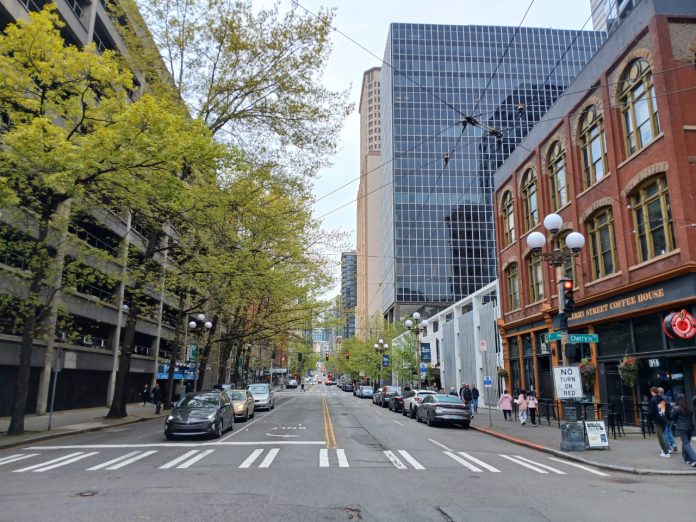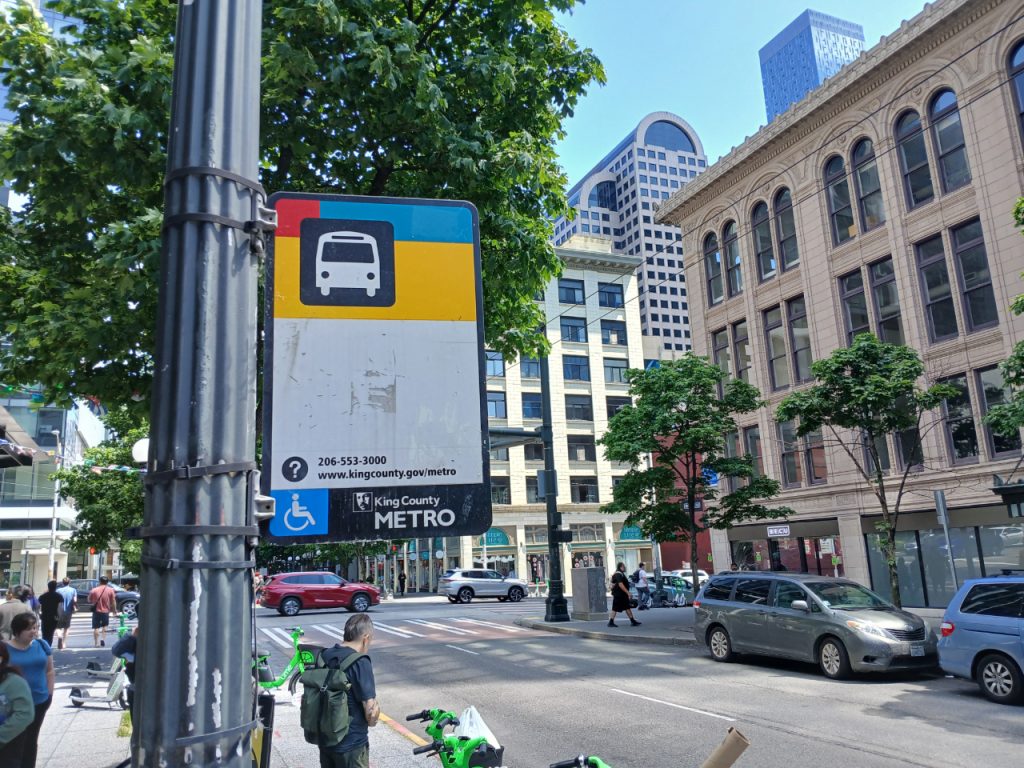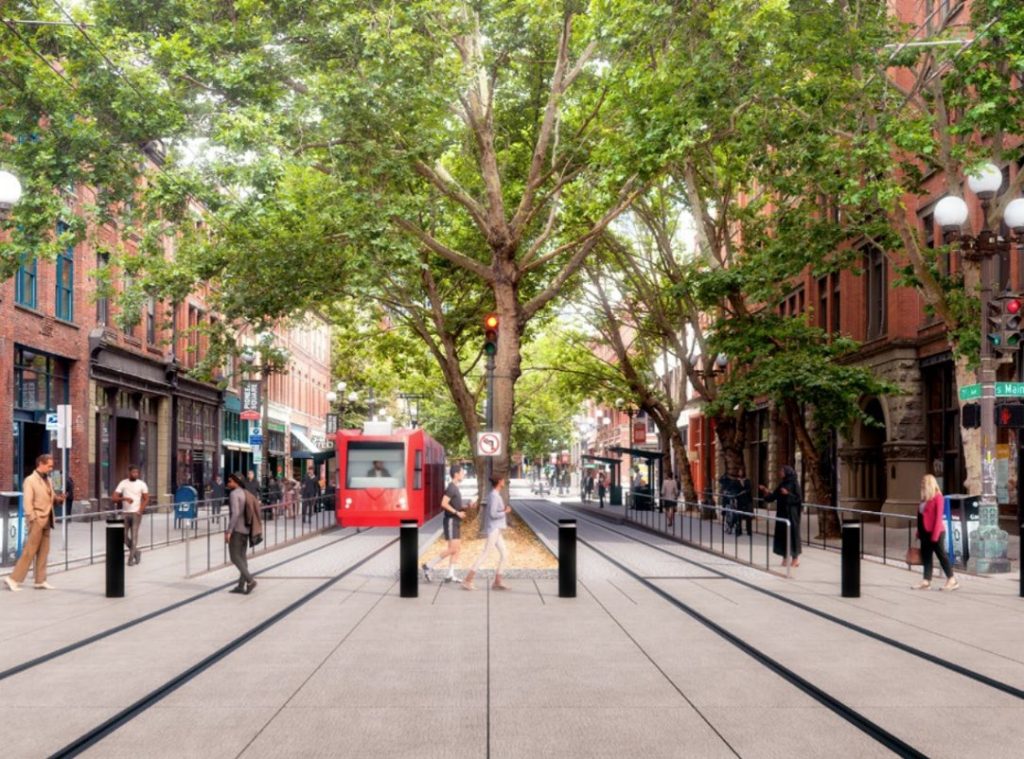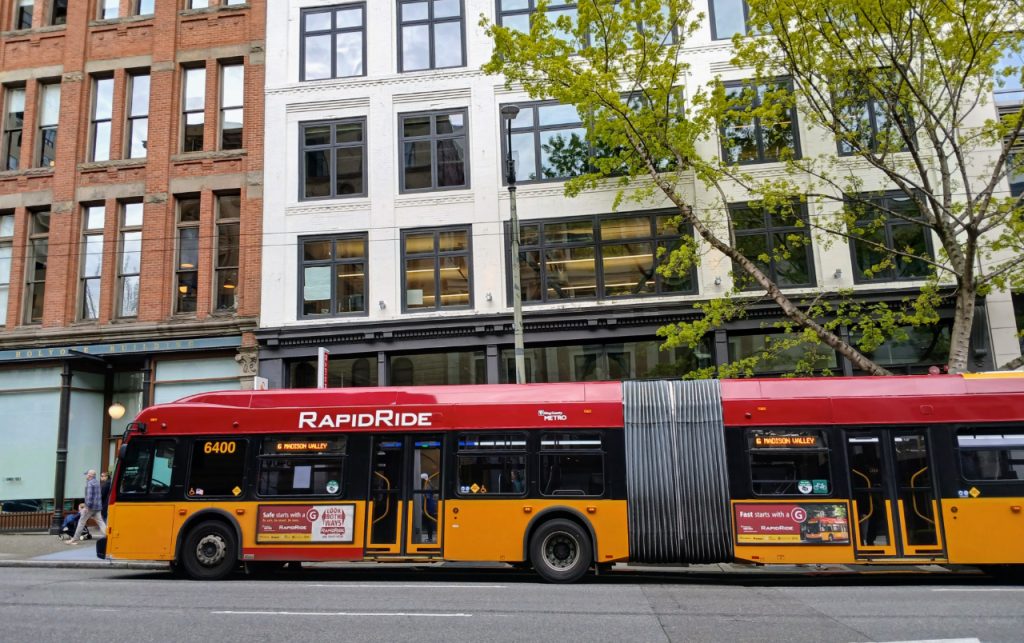
Seattle’s downtown is entering a new era: more than a decade of construction on the waterfront is wrapping up, empty storefronts are filling in, and the neighborhood is bustling on weekdays and weekends alike. But the downtown transit network is still firmly stuck in the past, with the waterfront ill-served, and a summer shuttle needed to fill in some of the mobility gaps. City and county leaders should find a way to restore transit service to First Avenue as a necessary step forward for improving downtown mobility, making the transit network more intuitive and easy to use for visitors and residents alike.
Many Seattleites may not know that prior to 2011, buses ran up and down First Avenue, connecting Pioneer Square to Pike Place Market and Belltown before heading off to other neighborhoods. Route 21 (which went to Arbor Heights), the 56 (Admiral), and the old 15 and 18 (to Ballard) were among the buses that ran on First instead of Third Avenue. This arrangement spread service more evenly across downtown and provided riders with more options.
It was the start of demolition work on the Alaskan Way Viaduct that prompted King County Metro to consolidate transit service on Third, in an attempt to maintain travel times for buses ahead of expected traffic congestion. A lone Metro route — the 99 — was left on First, but ultimately moved off the street in 2017, before being fully eliminated the next year.
Since then, King County has looked at what it would take to restore transit service to areas of Belltown and the waterfront that have been left without, but most of that work has been happening on paper, with little impetus to move forward. The city’s Downtown Activation Plan has treated ways to improve transit service as an afterthought.

Nearly a decade-and-a-half later, a downtown tourist has no way to get from Pike Place to Pioneer Square without backtracking to Third Avenue, and making the trip in reverse often involves walking up a large hill. The connections are anything but intuitive and simple, pushing visitors to private mobility options.
The Center City Connector streetcar extension was supposed to be the solution to this problem, adding both redundancy and capacity while finally bridging the city’s broken streetcar network. But that project is now in a deep freeze, with the Harrell Administration still technically on record in support but the Seattle Council pulling any references to the project from the city’s Capital Improvement Plan (CIP). A new path forward is needed.

Streetcar opponents have long argued that bus service would be a better alternative to building the Center City Connector, a fact that ignores many of the long-established benefits of the proposed line. Those arguments have largely appeared secondary to a desire not to see street space reallocated along First, particularly around Pike Place Market. This is actually not an either-or, and serving First Avenue with buses now would actually bolster the case to increase capacity and dedicated right-of-way with the fully-designed upgrade down the road, even as it’s far from clear that the political will exists to push forward right now.
The opening of Metro’s RapidRide G Line last year did bring east-west service to First Avenue, a big step in improving connectivity to destinations like Colman Dock. But frequent G Line service at Madison Street also highlights the fact that there are no other connections on the street, dropping riders off to make the last part of their trip on their own in most cases — with the long-planned streetcar transfer point abandoned.

There are new challenges to overcome in returning transit to First that didn’t exist a few decades ago. A popular street plaza now sits underneath trolleybus wire along Pike Street east of First, blocking a potential pathway. Streets in Pioneer Square have additional load restrictions thanks to deteriorating passageways underneath, with not enough city funding allocated for repairs. These are obstacles to overcome, and not reasons to shirk away from returning to serve the corridor.
The reasons that bus service was moved off First Avenue made sense at the time, but continuing to live in that reality would be missing a big opportunity for Downtown Seattle’s new era to be transit-focused, and to use all of the tools in the toolbox to improve downtown mobility. Entering this new transit-rich era on First will require careful collaboration across levels of government, but it would pay dividends for years to come.
Ryan Packer has been writing for The Urbanist since 2015, and currently reports full-time as Contributing Editor. Their beats are transportation, land use, public space, traffic safety, and obscure community meetings. Packer has also reported for other regional outlets including BikePortland, Seattle Met, and PubliCola. They live in the Capitol Hill neighborhood of Seattle.

